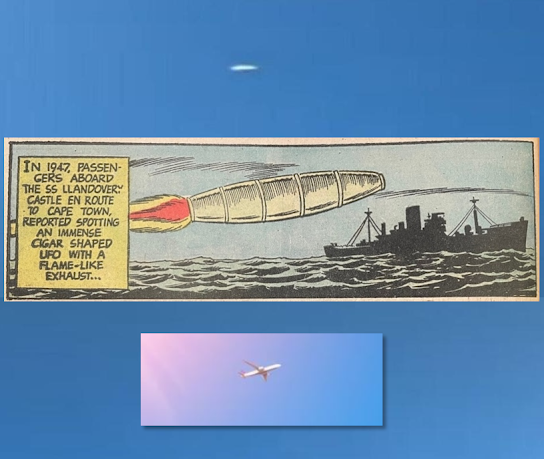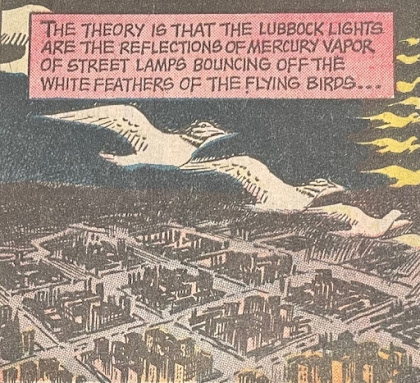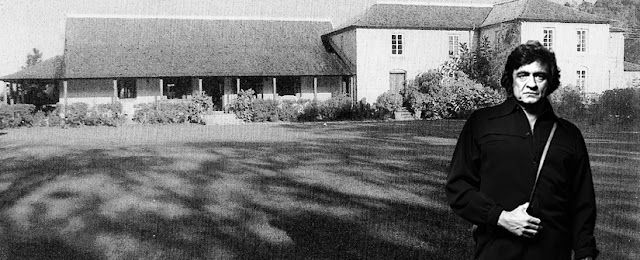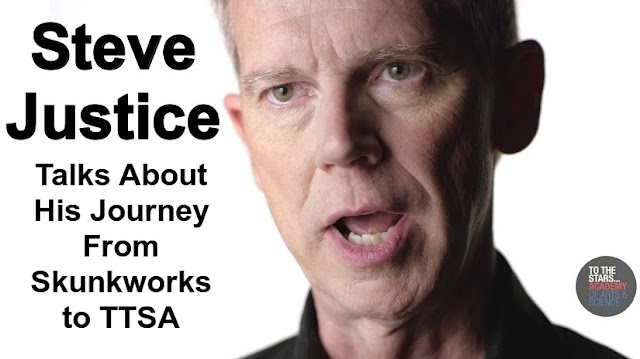This definitive unembellished overview of the saga of the witnesses in the Cash-Landrum UFO encounter was written by Curt Collins, and originally appeared in American Myths, Legends, and Tall Tales: An Encyclopedia of American Folklore (Vol I) edited by Christopher R. Fee and Jeffrey B. Webb, published by ABC-CLIO, 2016.
It's a good introduction to the facts in the Cash-Landrum case for those who don't know the story — or for those who think they do.
 |
| Art by Chris Lambright. See: The Cash-Landrum UFO: The True Picture |
The 1980 Cash-Landrum UFO encounter near Huffman, Texas, is one of the best-known, most thoroughly documented cases in UFO history. The witnesses sought restitution in court for injuries caused by a UFO, for which they held the U.S. government liable. However, once the legal case failed, the story of the witnesses was absorbed into the body of UFO lore and transformed into a parable about the evils of a coverup by the U.S. government.
It was in January 1981, during Betty Cash’s second hospital stay for a mysterious illness, that the story of the UFO encounter began to circulate. Weeks earlier on December 29, 1980, Betty (age fifty-two), along with her friend Vickie Landrum (age fifty-seven) and Vickie’s grandson Colby (age nearly seven), were driving back home to Dayton, Texas, after an evening out. They were on FM 1485, a lonely country road, when they spotted a bright object in the sky in the distance through the trees. Driving on they rounded a curve and found a massive, brilliant flaming object hovering over the road ahead of them. Betty stopped the car and got out to investigate, but Vickie returned to the car to comfort her terrified grandson. Betty remained outside for several minutes, trying to observe the object in detail, which they later described as larger than a water tower tank, making loud beeps and a mechanical whooshing sound it intermittently produced a brilliant flame-like jet of light and heat as it hovered over the road above the treetops.
In Betty Cash’s earliest recorded testimony from
February 1981, she said, “We could not get up close enough to detect what the
figure was. Or I couldn’t at least, the lights were too bright in my eyesight.”
She later added, “. . . this bright object that made the sky just split up and
it looked like the world was coming to an end. It was a very bright red. . . .
(Vickie) looked out the glass but she said the light was too bright for her to
see very much” (Schuessler 1998, 39, 253).
 |
| Sketch by Colby and Vickie Landrum, March 1981. |
Soon after Betty retreated to her car, the object slowly rose and moved away. As it did so, they saw that it was accompanied or pursued by a number of smaller aircraft. Once Betty’s eyes had adjusted, she started the car, and they continued their journey home. They kept the car’s air conditioner going, startled by the amount of heat the object overhead was producing. Further along the road, they encountered the mysterious object again, but this time they approached more cautiously and stopped a greater distance away. They were able to see the pursuing aircraft more clearly. There were more than twenty military helicopters, which they believed had been sent on a mission to pursue the mysterious object. Once it passed again, they continued their drive home, occasionally glimpsing the object and helicopters in the distance. The experience had badly frightened them, and they decided to tell no one of it: it was just too strange to be believed.
They continued to feel hot afterward and also began to feel ill. Vickie and Colby reported having flu-like symptoms with burning eyes and reddened skin over the next few days. Betty, who had been outside the car, had even more severe problems. She too thought she had the flu but, as the night went on, developed further symptoms: a severe headache, skin lesions, swelling and blisters on the face and scalp. When Vickie discovered how sick Betty was, she moved her into her home but saw no improvement. At this point, they did not connect their ailments with the UFO, and Vickie suspected that Betty was having complications connected with her prior heart surgery. Vickie checked Betty into Parkway Hospital in Houston, but the doctors were perplexed at Betty’s condition. The tests they ran failed to determine a cause for her problems, so she was treated for her symptoms, and after she showed improvement, they released her after about two weeks.
 |
| Betty Cash with hair loss after 2nd hospital stay. |
She continued to have health problems, however, and returned to the hospital a few days later. The tissue problems were mending, but the headaches, nausea, and diarrhea persisted, and a new symptom was noted upon readmission: patches of hair loss. This caused the doctors to consider the possibility of exposure to radiation, but results were negative. It was early in Betty’s second hospital stay that the story of the UFO encounter finally was told.
Once the story was out, they were encouraged to report
it. Vickie made calls, desperately trying to get some help and get an answer
for what the object was, how it had injured them, and who was responsible for
it. The helicopters convinced them that it was some kind of military operation,
and that the U.S. government would have knowledge of the incident. The first
real response to their inquiries came from the tabloid press, giving their
story national exposure. About the same time, Betty contacted John F.
Schuessler, an engineer for McDonnell Douglas at NASA’s Johnson Space Center in
nearby Houston. He was also an investigator for the Mutual UFO Network (MUFON),
and in that capacity he began an intensive investigation into the event as a
UFO case. The witnesses respected Schuessler’s authority and placed their trust
in him, sometimes quoting his analysis and speculation about the event rather
than their own memories.
 |
| John Schuessler, 1988 |
Over the next several months the media attention continued to build and formed a strange relationship with the case. The media seemed to take the lead in the production of new information and developments. Pleas in the news coverage for any additional witnesses to come forward yielded a few results: respondents claimed to see either a UFO or some helicopters. The story’s coverage by the television program That’s Incredible! generated publicity that led to an investigation by the Department of the Army’s inspector general as to whether U.S. Army helicopters were involved in the incident. In the spring of 1982 Lt. Col. George C. Sarran spent several months checking the possibilities and also traveled to Texas where he met with Schuessler, examined the cold leads, and interviewed the available witnesses. Sarran’s report stated that the witnesses were credible, but he found no evidence to suggest any U.S. military involvement.
The witnesses still felt that the government was not
being fully open with them regarding their involvement, and they were convinced
that the UFO was a military project of some kind. Schuessler seemed to feel the
same way, but he thought that the unknown craft indicated extraterrestrial
involvement.
In the summer of 1981, the witnesses had written to
their congressmen, who replied urging them to travel to Bergstrom Air Force
Base to meet with base officials to file damage claim forms. They did so, but
it wasn’t until late 1982 that Peter Gersten, the flamboyant “UFO Lawyer,”
filed claims for a total of $20,000,000 on behalf of the witnesses. When the
claims were denied, they attempted to file a civil suit against the United
States government, a contentious process that went on for the next several
years. This course of action failed as well, as there was never enough evidence
to satisfy a court. In August 1986, much to the disappointment of the
witnesses, the case was dismissed without ever going to trial. Media coverage
of the case faded away until it was revived in a 1991 Unsolved Mysteries
episode. In the show, the story was simplified and compressed with rumors and
supposition mixed along with the facts.
 |
| The Cash-Landrum UFO as depicted by ufologists and the media. |
Almost from the start, UFO believers and antigovernment conspiracy theorists transformed the story into a fable, teaching precautionary lessons about the dangers of military secrecy, nuclear energy, or of what happens to those who challenge the government’s UFO cover-ups. Throughout this transformation, the core of the story remained unchanged but details were embellished. Some versions claimed that the roadway was secretly dug up and replaced overnight at the scene of the incident, that the witnesses had been threatened by the government, and that the investigator in the case had described their indefinable brilliant object as a colossal diamond-shaped alien spacecraft ringed with blue lights. In the 1980s UFO lore focused on darker elements such as abductions, mutilations, and sinister treaties between aliens and the U.S. government. In such an environment, the Cash-Landrum case was often folded into that mix, which later became the source material for the 1990s X-Files television series. Beneath the legends there seems to be a genuine event at the core of the Cash-Landrum sighting, but separating it from the layers of myth that have become attached to it at an almost molecular level seems to be impossible.
The witnesses continued to fight for their story to be
heard, and the two ladies stuck to their claims until the end. Betty had poor
health the remainder of her life, which she attributed to the UFO. She died in
1998, but Vickie survived until 2007, dying at the age of 83. Today, only Colby
Landrum remains.
. . .
For Further Study
- "40 years and the Cash-Landrum UFO Case." 2020. Blue Blurry Lines website.
- “The Cash-Landrum UFO Case Document Collection.” 2015. Blue Blurry Lines website.
- Posner, Gary P. "The Legendary Cash-Landrum Case: Radiation Sickness from a Close Encounter?" Chapter 12 of The Reliability of UFO Witness Testimony edited by Vicente-Juan Ballester Olmos and Richard W. Heiden. 2023.
- Schuessler, John F. 1998. The Cash-Landrum UFO Incident. La Porte, TX: Geo Graphics.
































